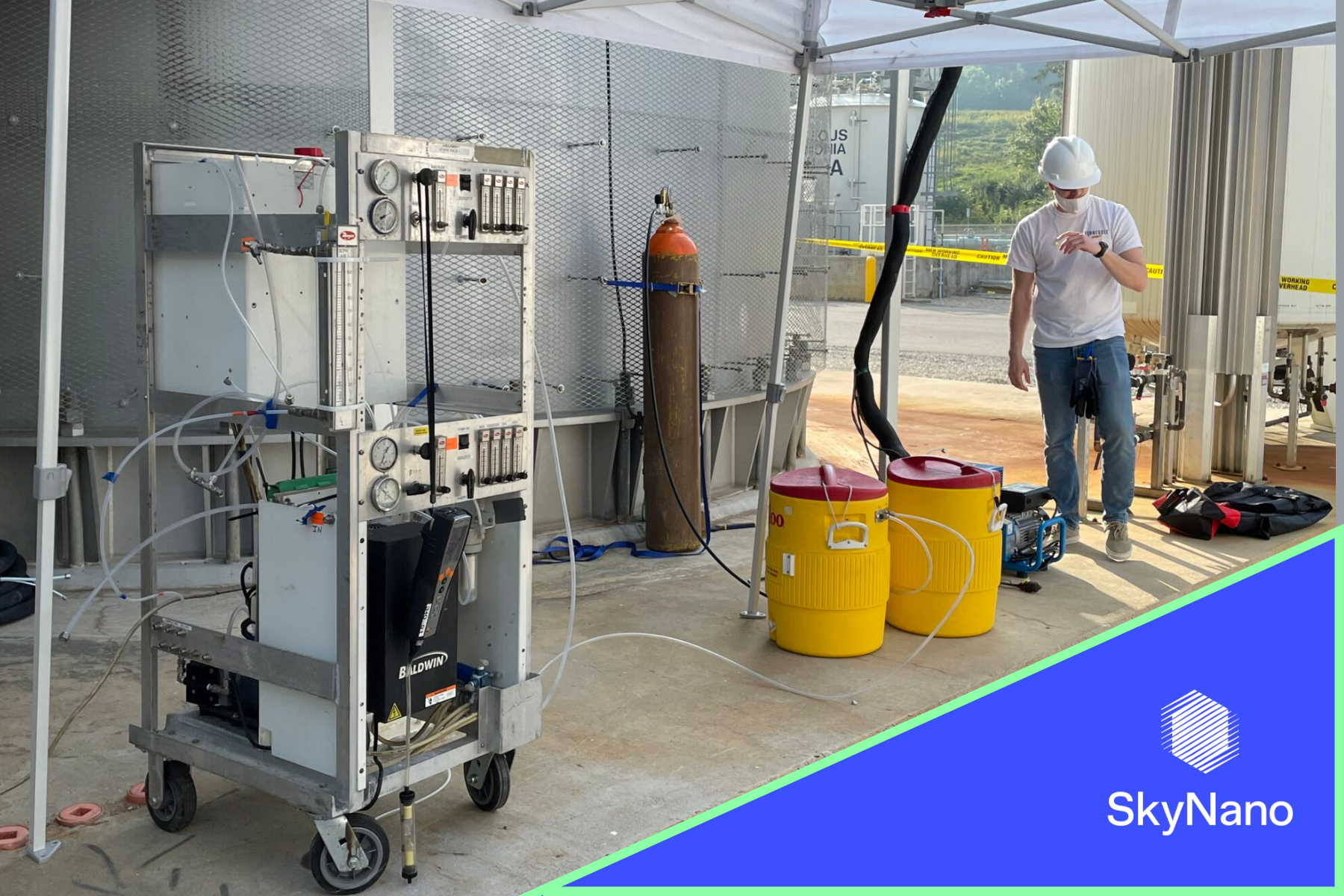Nanotechnology experts transform power plant carbon dioxide into product used in batteries, tires, ink and packaging
Contact: Hannah Whitson
hannah@piper-communications.com |423-408-4203
KNOXVILLE, Tenn. — SkyNano, developer of a manufacturing technique for the production of carbon-based nanomaterials using carbon dioxide – or CO2 – and electricity, recently announced the first ever production of carbon nanotubes from flue gas, obtained from Tennessee Valley Authority’s (TVA’s) John Sevier Combined Cycle Plant.
Carbon nanotubes, which are 1/100,000 the size of a human hair, are used to improve the electrical properties in some lithium batteries, such as those used in electric vehicles and consumer electronics, and to strengthen products such as wind turbine blades and boat hulls, and sporting goods such as tennis rackets, baseball bats and bicycle frames. Carbon nanotubes at the molecular level are 100 times stronger and one-sixth the weight of steel, and conduct heat and electricity similar to copper but without concerns about corrosion.
Creating nanotubes from the carbon dioxide produced by a power plant marks a major milestone in the development of carbon use. Manufacturers normally synthesize nanotubes from hydrocarbons in an emissions-heavy process, so producing them through the transformation and utilization of carbon dioxide from power generation is a major technological breakthrough that opens the door to uses of power plant emissions that can help decarbonize the grid even while keeping natural gas generation online.
This previously unaccomplished task will lead to the development of scalable technologies for using CO2 from power plants across the globe to produce valuable products.
“SkyNano is setting the standard worldwide for carbon capture and utilization,” said Anna Douglas, CEO and co-founder, SkyNano. “We proved power plant flue gas emissions can be captured and turned into valuable, high-quality materials. The next step is to scale this approach so we can help utilities convert flue gas into valuable carbon nanotubes that can then be used by battery and tire manufacturers and even inks and coatings. This demonstration is one of the first of its kind, showing the ability to make a marketable product from real-life power plant flue gas.”
This latest effort by SkyNano to produce advanced carbon materials from CO2 is part of a three year, $2.5 million federally funded project and a key step in bringing new carbon-utilization technologies to scale. In 2020, the U.S. Department of Energy’s (DOE) Office of Fossil Energy and Carbon Management (FECM) selected SkyNano to demonstrate the ability to utilize flue gas provided by TVA to produce carbon nanotubes.
Dr. Joe Hoagland, vice president of TVA Innovation & Research, said TVA is pleased to collaborate with SkyNano as they scale this technology. “Carbon nanotubes are increasingly used in electronics, power cables, batteries and other products,” he said. “This is a technology that can capture and remove carbon in a productive manner.”
About SkyNano Technologies
SkyNano is a science-based technology company focused on commercializing a free-market solution to carbon pollution. It specifically develops a novel electrochemical manufacturing technology for the capture and conversion of CO2 from various sources (atmospheric, concentrated, flue gas) into valuable carbon-based materials such as carbon nanotubes. SkyNano’s technology has been featured in many peer-review scientific papers, received recognition from a 2021 TechConnect Innovation Award, 2020 R&D100 award, and was recognized with a Forbes 30 Under 30 award to our Co-Founder and CEO Dr. Anna Douglas. In fact, both SkyNano founders are Forbes 30 Under 30 innovators, as Prof. Cary Pint was awarded the recognition in the inaugural year of the awards. To learn visit: https://www.skynanotechnologies.com/
###



